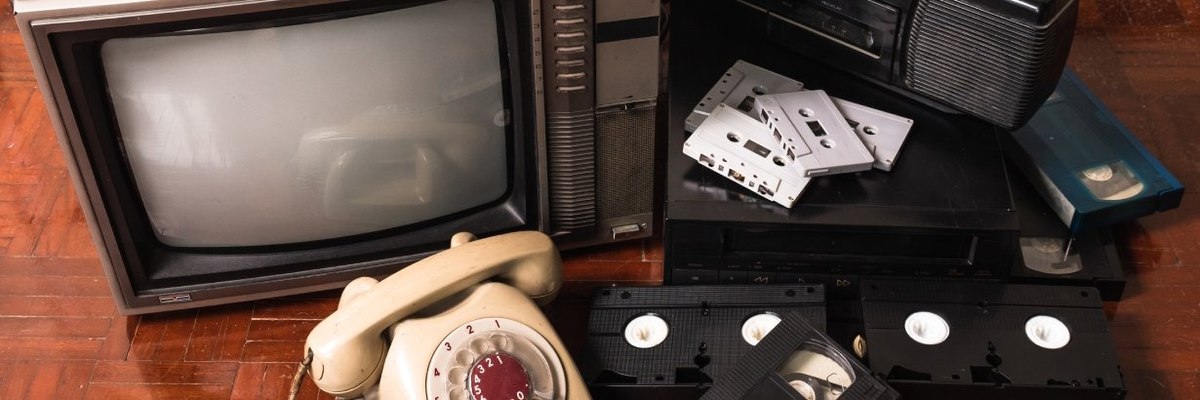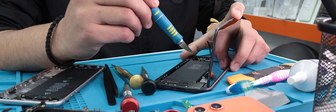And what classic technology have the younger generations never encountered?
From chequebooks to CDs, dictionaries to wall calendars, such items may seem like museum pieces to the younger generation, but which items from previous generations are still used by Britons today?
A new YouGov RealTime survey has revealed the activities and items from the past that remain popular despite advances in technology, as well as those that the younger generation have never experienced.
In the streaming era, four in ten Britons still watch DVDs and listen to CDs
With the arrival of digital copies of films and streaming services, DVDs are becoming a thing of the past, but 38% of the British public say they still watch them. The format is still in favour with the older generations, with 48% of those aged 70 and over still watching DVDs compared to a quarter of the under 30s (27%).
The CD has also been largely replaced by digital downloads and streaming services. However, 39% of Britons say they still use the format to listen to music. Again, it’s the older generation favouring CDs, with more than half of those in the 60 and older age groups (56-58%) still listening to them compared to just one in five in the under-40 age groups (20-22%).
Despite a recent revival in vinyl sales, 40% of Britons under 30 have never listened to music on a vinyl record player, compared to only 1-3% of Britons aged 50 and over. A consistent one in five of all age groups (19-22%) say they still listen to music on a vinyl record player.
One in seven Britons have never used a telephone box and one in five have never connected to the internet on a dial-up connection
At their peak in the mid-1990s, there were around 100,000 phone boxes in Britain. The advent of the mobile phone has seen that number drop to just 20,000 working boxes with one in seven Britons (14%) saying they have never used one, including 60% of those aged under 30. Nearly a quarter of the younger generation are also unfamiliar with a mobile phone that can’t access the internet with 23% of those aged under 30 having never owned a dumb phone.
A quarter of Britons (25%) say they have also never made a phone call on a rotary phone, including six in ten Britons aged under 30 (63%) and a third of those aged 30 to 39 (34%). Along with never having to spin a dial for each digit on a phone number to call someone, one in five Britons (19%) have never connected to the internet using a dial-up connection, including nearly half of adults aged under 30 (47%).
One in five Britons have never used an A-Z road map or a chequebook
As well as replacing dumbphones and telephone boxes, the smartphone – along with the sat nav – has significantly reduced the public’s use of the printed A-Z road map. Almost one in five (18%) have never consulted an A-Z for directions, including 42% of those aged under 30 and 28% of those aged 30 to 39.
With apps allowing us to conduct most of our banking from our phone, nearly one in five Britons (19%) say they have never paid for something using a cheque, including 61% of those aged under 30. One in seven Britons (14%) do still use a chequebook with the form of payment remaining popular among the older generation who believe cheques are more reliable than electronic payments. One in five Britons in their 60s (21%) and 40% aged 70 and over still use cheques compared to just 4-8% of those in under-50 age groups.
Printed dictionaries and wall calendars have survived the digital era
While a quarter of Britons (26%) say they have never owned a printed encyclopaedia, the dictionary has fared better with half of the British public (51%) still owning a printed version. A third of those in the under-40 age groups (31-35%) still own a dictionary, rising to eight in ten aged 70 and over (80%).
Another paper product that has survived the digital onslaught is the wall calendar. Despite smartphones having the capability to send notifications of events throughout the year, more than half of Britons (55%) still use a wall calendar to keep track of events and birthdays. Four in ten 18-29 year olds (40%) still mark events on a traditional calendar, as do two-thirds of those in the 60-and-over age groups (66-67%).
A quarter of the British public (26%) say they still buy a newspaper. More than half of Britons aged 70 and over (54%) say they still buy a newspaper but this number falls to 38% of those in their 60s, 27% of those aged 50 to 59, 19% in their 40s, and to just 11-15% of those in the under-40 age groups. One in nine Britons (11%) say they have never bought a newspaper, a figure that rises to a third of those aged under 30 (32%).
How has the digital age affected the British public’s use of the postal service?
Sending a postcard to friends and family used to be a holiday tradition but now only one in five Britons (20%) say they still send a postcard, with 22% of those aged under 30 never having sent one.
Sending a special occasion card in the post, however, is still a popular activity. Although social media and the rising awareness to save trees has impacted the greetings card industry, almost two-thirds of the public (64%) still send cards in the post. Three-quarters of Britons in the 60-and-over age groups (75-77%) still send special occasion cards in the post but this number falls to 47% of those aged under 30.
As with greeting cards, more than half of Britons (55%) still post letters. Again, this is an activity which is still very much favoured by the older generation with two-thirds of Britons in the 60-and-over age groups (65-69%) still sending letters compared to four in ten 18 to 29-year-olds (40%).
Picture: Getty











